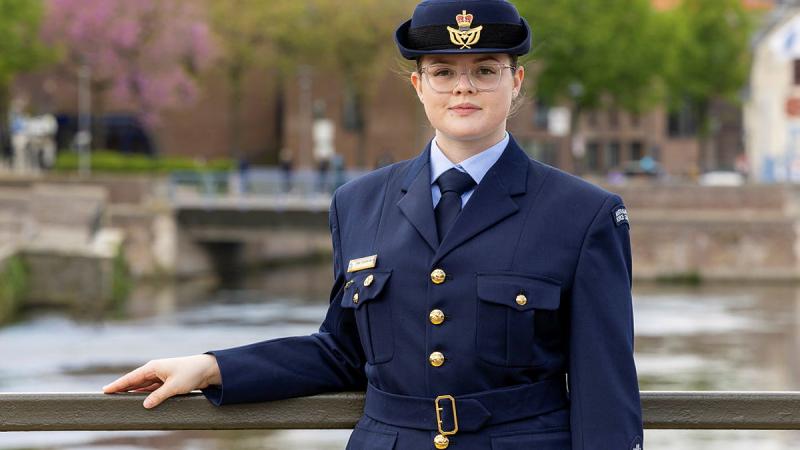
Leaving a medical appointment with a look of confusion on their face is a common experience for many Australians.
What did the doctor just say? I’m supposed to do what now? What does that mean?
Help could be at hand with digital humans – more than an avatar or a CGI replica, a complete digital human is designed to have a natural conversation with you about your health.
It sounds like science fiction, but it’s already a reality thanks to the work of Marie Johnson, managing director of the Centre for Digital Business.
Ms Johnson will be speaking about her work in this complex field at the upcoming APHA 39th National Congress.
“I’ll be focussing on the human experience from the patient perspective,” she said.
“Basically, when the internet was created, it was designed and built in a structural way and that led to websites that were awful to navigate and documents that were presented in a way that’s very complex.
“What this has actually done has compromised outcomes in health care and government servicing.”
In 2016, Ms Johnson led the co-creation of “Nadia”, the world’s first Artificial Intelligence (AI) powered digital human for service delivery for people with a disability.
Nadia was designed to have human-like conversations and even the way she looked was vital.
Lip colour that supported lip reading for those with hearing impairment; short hair that reduced distraction for those with cognitive disability; and a calm manner designed not to startle.
Ms Johnson said her work on Nadia was partly inspired by the problem of “illiteracy and cognitive function”, meaning people simply didn’t understand or couldn’t navigate the complex world of government servicing.
“There’s a technical way of presenting information and people just can’t comprehend it, even on the internet,” she said.
“So really the challenge was, how could we make the web itself more human?
“The rigid world of structured websites, structured forms, structured channels, call centres, defined hours and complex bureaucratic language are impenetrable barriers for people with intellectual disability and cognitive impairment.”
Ms Johnson’s latest work is the AI powered Digital Human Cardiac Coach, “Hanna”, which was developed after more than a decade of “lived experience” in cardiac health.
“My husband, Al, is a heart patient – four heart surgeries, all up, eight cardiac bypass grafts and four stents.
“He’s also a former RAAF aeronautical engineering officer with a research background in expert systems.
“He’s a personal trainer, a Heart Foundation ambassador and volunteer, a cardiac rehab patient, a guest university speaker and contributor to the development of the Australian heart and stroke national action plan.
“And some days, lost in his own personal grief.
“If we struggled – imagine how hard it would be for others? A heart patient is more than a heart patient, they are people seeking information and reassurance.
“When you’re dealing with cardiac issues, if you’re seeing a surgeon for example, you have already entered an acute situation.
“You’re dealing with your own mortality and how traumatising that can be.”
Hanna is designed to talk about cardiac health in a natural way, allowing patients to ask questions in everyday language, whenever they want.
“People cannot understand what their doctor is saying, or they forget what they were told, or even that they can’t navigate a hospital with complex signage – for example, the word ‘oncology’, what is that?,” Ms Johnson said.
“This is not about diagnosis and treatment, this is about being able to go home after seeing your doctor and get the information you need in a way that you can understand – in a conversation.”
According to Ms Johnson, digital humans were there to augment the services of real life doctors and nurses.
“Another big issue is the burn out rate of medical staff – the demand from patients for just that ongoing, basic conversation puts a huge pressure on staff,” she said.
“Digital humans can be part of the service delivery.”
In the United States, the use of AI powered systems are already in use, including the SimCoach system which is being used to monitor symptoms of Post Traumatic Stress Disorder in returned servicemen and women.
“It’s been highly effective, particularly in the engagement with veterans,” Ms Johnson said.
“We’re also seeing the use of this technology in the so-called ‘smart home’ and this can have health applications too – for older people, living alone, it might record they got up five times in the night to go to the bathroom.
“Then in the morning, it might say ‘hey Jack, you got up five times last night, might be time to make a doctor’s appointment’.”
Ms Johnson added one of the most critical aspects of digital humans was co-design.
“The co-design process determines the purpose, role, personality and operating model supporting the particular digital human,” she said.
“These digital humans need to be more than just a pretty face. A person’s cultural aspects need to be embedded within them – culture, language, food references etc, can be localised and it can be tailored to anyone.
“For example with the cardiac coach, if you’re an Indigenous Australian, the digital human can be designed using words and mannerisms that convey those messages to Indigenous people.”
Ms Johnson said the uses for digital humans were almost limitless.
“I really feel this is a humanitarian application of technology,” she said.
“Human rights extends to health care and we really hope this is going to be a breakthrough for everyone.”






